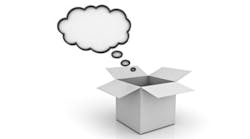Jeremy Pollard, CET, has been writing about technology and software issues for many years. Pollard has been involved in control system programming and training for more than 25 years.
I was asked, "Have you heard of DGLux?"
"Uh, no," I answered.
Well, DGLux is from a company called DGLogik in San Francisco. With Google as my guide, I entered a world of building management and a disparate, smart-device framework platform.
SEE ALSO: Object Oriented Programming in Control System Software Engineering
The main application, or so it seems, is in building control, temperature control and general graphics overviews. I have not demo-ed the product yet because there's a secondary learning curve for a platform called Niagara (an open-source version is called Sedona) if you use DGLogik's "visualization platform." The company also developed an embedded appliance with a similar graphic design platform called DGbox, which permits access to networks with disparate protocols. Niagara is a Java-based platform that claims to interface with anything embedded.
Generally speaking, DGLux's claim to fame is a non-coded graphical solution to create screens that model anything building-centric, such as floors, rooms, HVAC, rooftops and the like. Some of the smart devices that could be present include thermostats, proportional valves, dampers and lighting controls. It seems that if the designers of the buildings want full control over every aspect of the building, they can have it.
Motion-controlled lighting and area access control through the use of door locks or cards creates a complete system that offers an "ant farm" view of the facility. Elevator control and monitoring seems a snap.
The user, who might be a security person at the front desk, would have access to the complete farm, and could block anyone from anywhere. With video and transaction logging built-in, historical tracking is a piece of cake. Anyone could be a true CSIer.
Minimal training for operation looks to allow for a quick uptime curve. In fact, there's a university-type section for learning, including a Wiki page that gives the developer a step-by-step approach to understanding the platform.
Remember Object Automation, that spinoff of Wonderware employess who developed an object-based framework? Niagara/Sedona is the same for building automation.
All the while, I wondered how it might be applied to machine control and integration into the ant farm. I looked at a service called LiveFloorPlans from whatcorp.com. It generates a rotatable image for emergency exit paths or for a general layout in 3D. QA Graphics provides a service to create 3D graphics that can be used with Niagara and, I assume, DGLux Visualization platform. Some of the stock images are stunning.
Any device that uses the Java Application Control Engine (JACE) can be discovered. While Niagara/Sedona runs in its own environment, SoftJACE runs in a Windows environment. It essentially replaces your current SCADA system. While in a similar league for pricing and licensing, the ability to use multi-protocols such as LONWorks and BACnet could provide some benefits, depending on your application.
The DGBox appliance allows you to develop web-based SCADA and HMI screens with the same development tool(s). It costs only $600, so the investment is small to try a new option for machine monitoring. While it supports many protocols, they're mostly for building automation. Because of this, you might have decided to not use certain devices in your machine design because of the lack of drivers and data accessibility. Now you can do it with ease and also provide an automatic, web-based client environment for local or remote access.
Windows OPC servers are not cheap. The BACnet OPC server is about $1,300. So if the devices you use employ BACnet, then the DGLux appliance can access them directly. I believe that the DGBox can access a third-party OPC server, so some of your process data can be part of the visualization that you use the DGbox for. The system design palette has all imaginable active components, such as graphing, pictures, scripting and the like — all in all a very impressive collection.
I was really taken by Opto 22's groov, and to see the DGBox appliance implement a similar form factor makes me think that maybe really we are reverting back to definite-purpose control and visualization.
Regardless, you can use DGBox to control your building facilities with all of the networked devices available, and leave the heavy lifting to the PLC.
This is thinking into the box.






